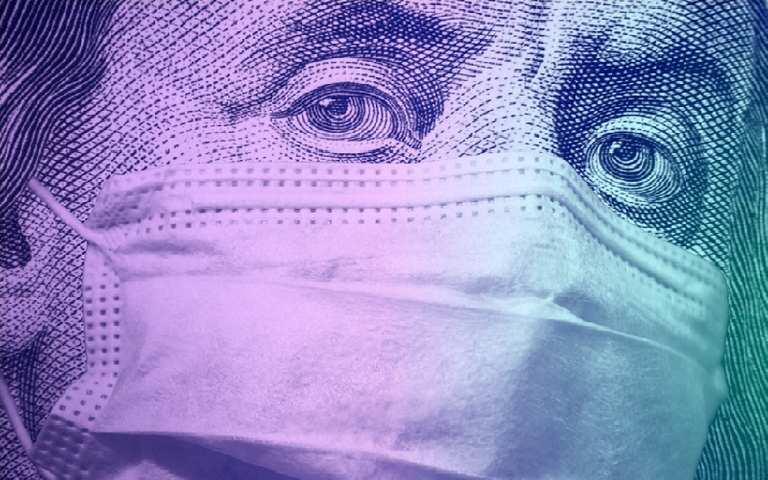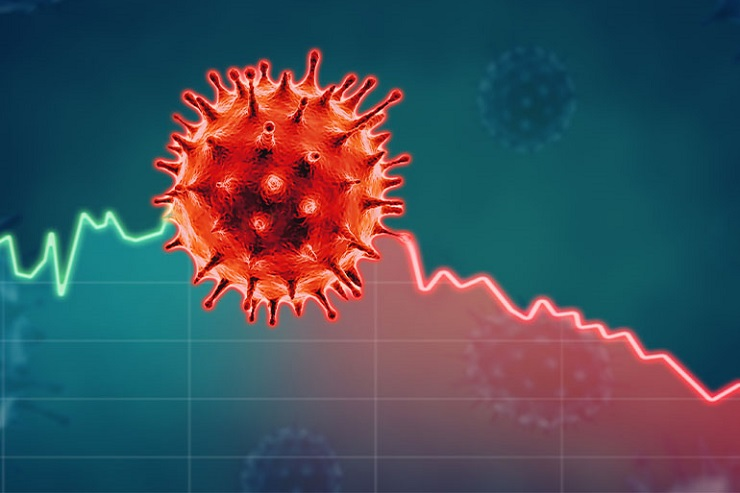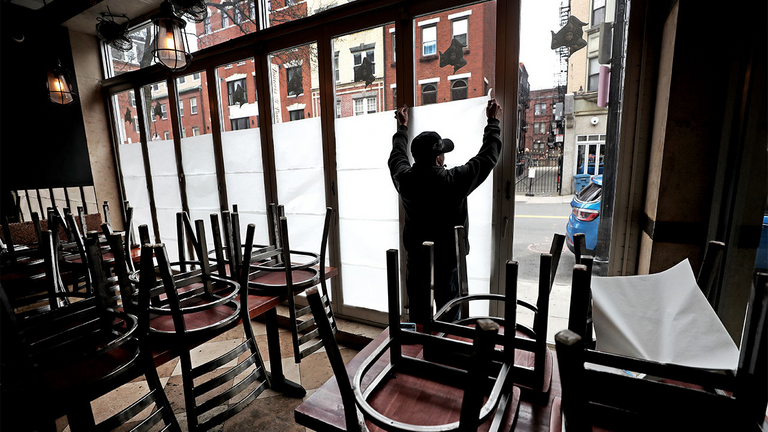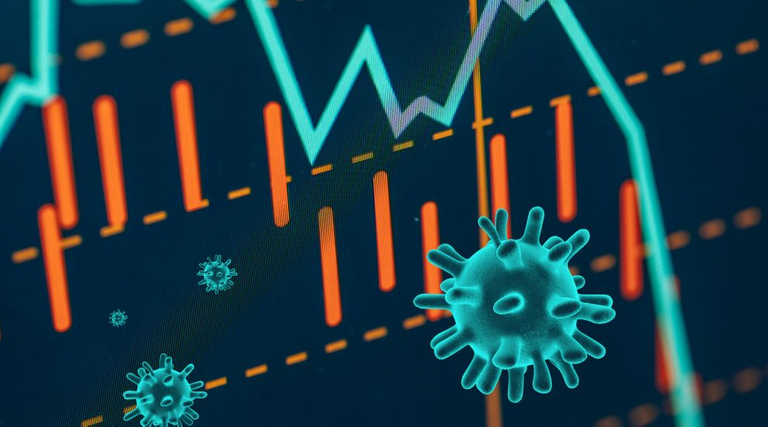Economy and Corona - Pricing Human Life !!
While there is discussion in the corridors of how people will manage the loss of income in the short term, these days there is an enormous debate, more serious, raised at the level of healthy economists, about whether the economic cost of precautionary measures and measures designed to stem the spread of the Coronavirus epidemic pays off, and benefits are achieved. The desired health or not, with health economists setting the pricing of human life in a debate with numbers and statistics.

In fact, the global economy’s movement was disrupted by the spread of the Coruna virus .. In the United States alone, about 3.3 million people registered applications for unemployment benefit in late March, while US President Donald Trump had hoped to lift restrictions imposed by the epidemic by Mid-April; to stop or minimize the economic damage caused by the current situation, but eventually settled to extend the period of preservation until the end of April.
Trump extended his decision, after epidemiologists warned that a return to normal behavior could lead to a greater spread of the virus, which, according to some estimates, could result in the deaths of up to two million American people.
With strong interventions and more stringent and firm measures, the models reviewed by the White House indicate that deaths can be reduced to 100,000 or perhaps less.
This sparked a shocking debate about: (Estimating the financial value of lost human lives, or the dollar value of saving a Corona patient's life). The balance has been suspended between the trillions of dollars of lost economic output on the one hand, and the countless lives of the injured have been claimed on the other. In fact, no rational discussion of this most important matter can take place without reviewing the methods devised by health-conscious men and experts interested in Modeling health matters according to economic models, to answer this thorny question:
Why do we put pricing on human life as long as it is invaluable?

Pricing human life under Corona
In essence, this is a debate that raises an issue that economists have long confronted. In the 1960s, Nobel Prize-winning economist Thomas Schelling-Thomas Schelling proposed allowing people to price their lives. However, determining pricing for human life in light of the Corona economy will be irritating to a large number of readers. Indeed, Governor Andrew Cuomo-Andrew Como recently tweeted: “You cannot put a price on human life.” And he's absolutely right. But when it comes to public policy, it becomes impossible to think this way quickly.
For example, in a healthy economy and with the opening of a debate about pricing human life under the Corona economy, if we assume that it takes spending an estimated trillion dollars per person to prevent inevitable deaths, it will run out of money in one day.
Consequently, when developing precautionary measures, measures, and executive regulations for them, policymakers use the so-called "Value of a Statistical Life - VSL", also referred to as the cost of life, meaning: economic value It is used to determine the benefit (marginal cost) of preventing and avoiding death under certain circumstances, in order to set a maximum limit on the amount of implicit costs that measures can be imposed on peoples to save the lives of these individuals.
So, policymakers and health economists have set an invaluable economic value to everyone’s life, we will spare no expense (and we will not be afraid to impose a method of balancing an individual’s life with the money spent for that) if we can simply demonstrate that it will save one life.
For example, America allows its citizens to take many risks, such as driving at speeds of 70 miles per hour on highways, because the societal burden to eliminate these risks can be justified, even though the lives of individuals are lost inevitably as a result.

How do economists calculate the value of preventing deaths?
The price / value of statistical life - healthy economy
Pricing human life in the Corona economy: the difficult choices that policymakers and health economists aspire to tackle the Corona pandemic.
There are two basic approaches to the pricing dilemma of human life in the Corona economy, according to health economists and statistics:
The first: Value of a Statistical Life (VSL) known to define the appropriate level of health, safety and environmental regulation (previously explained above).
The second: the value of quality-adjusted life years known as (QALYs) to assess the cost-effectiveness of clinical medicine, such as: diagnostic procedures, surgeries or medications, according to the number of years.
To clarify, if 5,000 workers pay an estimated $ 2,000 annually to work in a risky job, you will result in the death of one of them (compared to a non-risky alternative job), then we conclude that the value of the (VSL) for these workers is $ 10 million (the product of multiplying 5,000 workers x $ 2,000). That is, as a group, they are willing to pay $ 10 million a year to gamble a little high risk, (statistically) one of them is likely to be killed (we do not know exactly who he is among them).
First - according to VSL methodology:
The standard approach to assessing the value of life for health-related regulation according to the statistical value-of-life method (VSL) begins with obtaining values (VSL) in general, by actually examining people's actions, for example: choosing the type of work that involves the risk of death, or making a wear decision Seat belts, or in consumer purchasing options that can affect health.
It is hard to imagine that any worker would agree to pay an additional $ 2,000 in exchange for knowing that he was going to die. But this is not what happens in this analysis. For every 5000 workers, an additional fee is paid for gambling. This is not much different from the risk we all willingly assume every day, be it by exceeding the speed limit or even by walking across roads (the risk rate is said to be 1 in 300 million deaths).
The values obtained in when studying (VSL) will vary depending on the characteristics of the same factor, to find that sometimes there may be greater willingness to gamble on the part of older workers. For example. (Even if that is not true), it may seem strange to associate an identical life value between a 20-year-old worker who has the opportunity to live and live for the next 60 years, more than life expectancy at stake, compared to another factor, 65 years old, Only a quarter of that time may live in the future.
Thus, the discussion becomes more sensitive when health economists look at the age profile of the dead victims. This raises the question: Does saving an 80-year-old's life have the same value as saving a child's life?
One day a legal scholar who worked in the Obama administration, who was then head of the White House office responsible for these assessments, proposed focusing government policies on saving young lives first, and wrote: “The program that saves young people is better in this respect than the program that saves adults. Age".
Thus, it is customary to convert (VSL) to what is known as "Value of a Statistical Life Year - by dividing (VSL)" by the average of the remaining years of life expectancy between the group being studied, then it can then It would use (VSLY) to derive (VSL) again systematically, varying by age, with a greater value assigned to older children.

Second - according to QALYs methodology:
One criticism of the VSL / VSLYs methodology is that it can adequately calculate the value of life, but it does not take into account the quality or quality of life. Most people do not appreciate that a period of time estimated at a year of life spent by bedridden patients is equivalent to a year of life in excellent health. Here comes the QALYs methodology as a way to allow the value of life to diversify based on subjective quality-of-life assessments.
Over the past decades, a simple method (measured by the services and facilities provided) has evolved around a method for assessing the way Americans perceive different health conditions and the associated value. So if (1) represents the ideal good health value, and (0) equals the death value, then this method raises preferences about the value, i.e. pricing, that we must attach to different health conditions.
For example, in a study on kidney patients to assess their need to undergo hemodialysis sessions regularly, patients obtained a value (0.75), i.e. an estimated 25% decrease in the value of life relative to the optimum health value estimated at (1).
In the United States, the value of one (QALY), meaning a full year of optimal health, is estimated with a routine value ranging from $ 100,000 to $ 150,000. While the Clinical and Economic Review Institute (ICER), which specializes in evaluating the cost-effectiveness of clinical procedures, such as: preventive services, surgeries, as well as diagnostic equipment and medicines, uses a routine value of (QALY) of $ 50,000, $ 100,000, $ 150,000, and $ 200,000, This is according to the "Sensitivity Analysis" model, which is a careful analysis that allows the life insurance company to routinely cover anything that crosses the $ 50,000 / year line threshold, but imposes a type of cost-sharing on the benefits and benefits covered for unmet procedures. Except at the threshold of $ 200,000 / year.
Here, there is increasing pressure on governments to interpret their plans in the health economy, due to the increased economic costs of measures designed to contain the coronavirus, and adding to concerns that health care supplies could be undermined if the Corona virus crisis has persisted for a long time.

Source of Images
Source of some info
Nice analysis but you don't need to compare human lives to money because economic impacts of restrictions directly cost lives through suicide, drug abuse, depression, domestic violence etc.
Also, without an economy there is no tax revenue and thus nothing to pay health costs. Just printing more money as the US is will destroy the entire fiat financial system, costing even more lives.